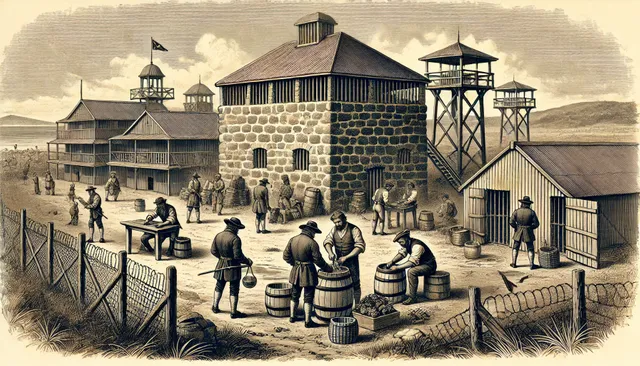Australia's Beginnings as a Penal Colony
Australia's Beginnings as a Penal Colony

Australia, now known for its vibrant cities, unique wildlife, and vast landscapes, has a historical narrative that starkly contrasts its modern image. The country was initially established as a penal colony, a distant outpost for Britain to exile its convicts. This chapter in Australia's history laid the foundations for what would eventually become a thriving and diverse nation.
The Origins of the Penal Colony
In the late 18th century, Britain's prisons were overcrowded due to a rising crime rate and harsh sentencing laws. To alleviate this problem, the British government decided to establish a penal colony far from its shores. After considering several locations, the decision was made to send convicts to New South Wales, an unexplored territory in the southern hemisphere.
The First Fleet
On January 26, 1788, the First Fleet, consisting of 11 ships, arrived at Botany Bay, led by Captain Arthur Phillip. The fleet carried approximately 1,500 people, including around 700 convicts, alongside officers, marines, and their families. The initial landing at Botany Bay proved unsuitable, prompting Phillip to move the settlement to Port Jackson, where Sydney now stands.
Life in the Penal Colony
Life in the early penal colony was harsh and challenging. Convicts were put to work building infrastructure, such as roads, bridges, and public buildings, as well as farming to provide food for the colony. Discipline was strict, and punishments for disobedience were severe. Despite these hardships, the colony slowly began to grow and develop, with some convicts eventually earning their freedom and contributing to the nascent society.
Expansion and Settlement
As the colony expanded, more ships arrived with additional convicts and free settlers seeking new opportunities. The discovery of fertile land and valuable resources led to further exploration and settlement across the continent. Convicts played a significant role in this expansion, as their labor was essential for building the infrastructure needed to support growing communities.
Transition to Free Society
By the mid-19th century, the nature of the colony began to change. The transportation of convicts to New South Wales ended in 1840, although it continued in other parts of Australia for some time. Free settlers increasingly dominated the population, and the economy diversified beyond its initial reliance on convict labor. Gold rushes in the 1850s attracted a surge of immigrants, further accelerating the transformation into a free society.
Legacy of the Penal Colony
The legacy of Australia's penal colony origins is still evident today. Many Australians can trace their ancestry back to convicts, and the nation's history is rich with stories of hardship, resilience, and redemption. Historic sites, such as the Hyde Park Barracks in Sydney and Port Arthur in Tasmania, serve as reminders of this formative period.
Conclusion
Australia's evolution from a remote penal colony to a modern, dynamic nation is a testament to the strength and adaptability of its people. The early convicts, despite their circumstances, laid the groundwork for a society that values freedom, opportunity, and diversity. Understanding this history provides a deeper appreciation for Australia's complex and compelling journey.
Congratulations, your post has been upvoted by @upex with a 0.97% upvote. We invite you to continue producing quality content and join our Discord community here. Keep up the good work! #upex